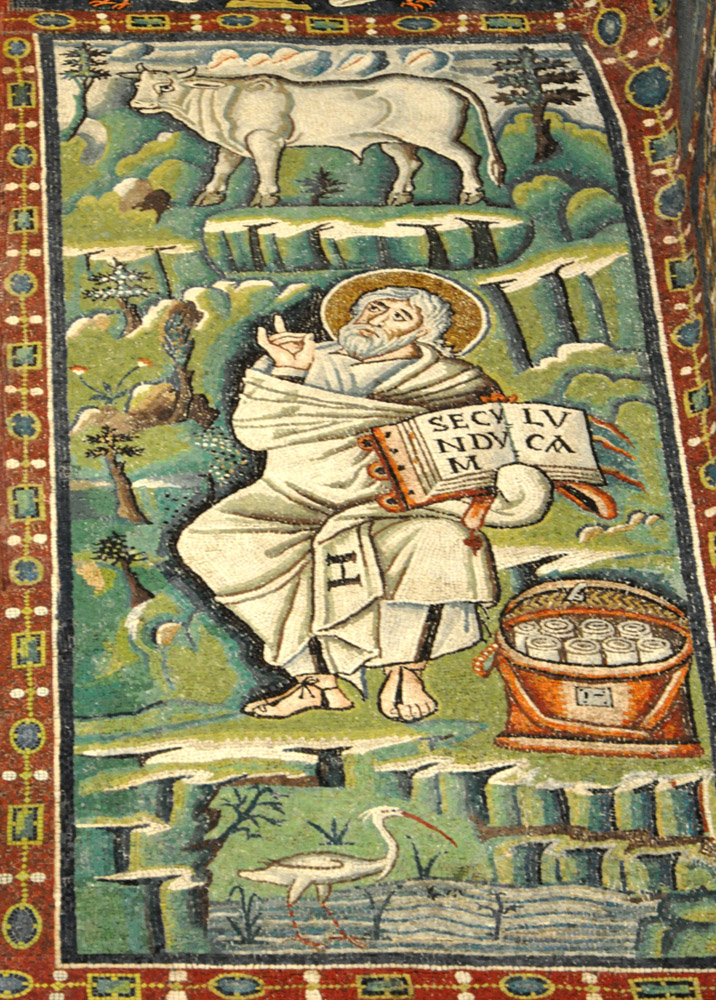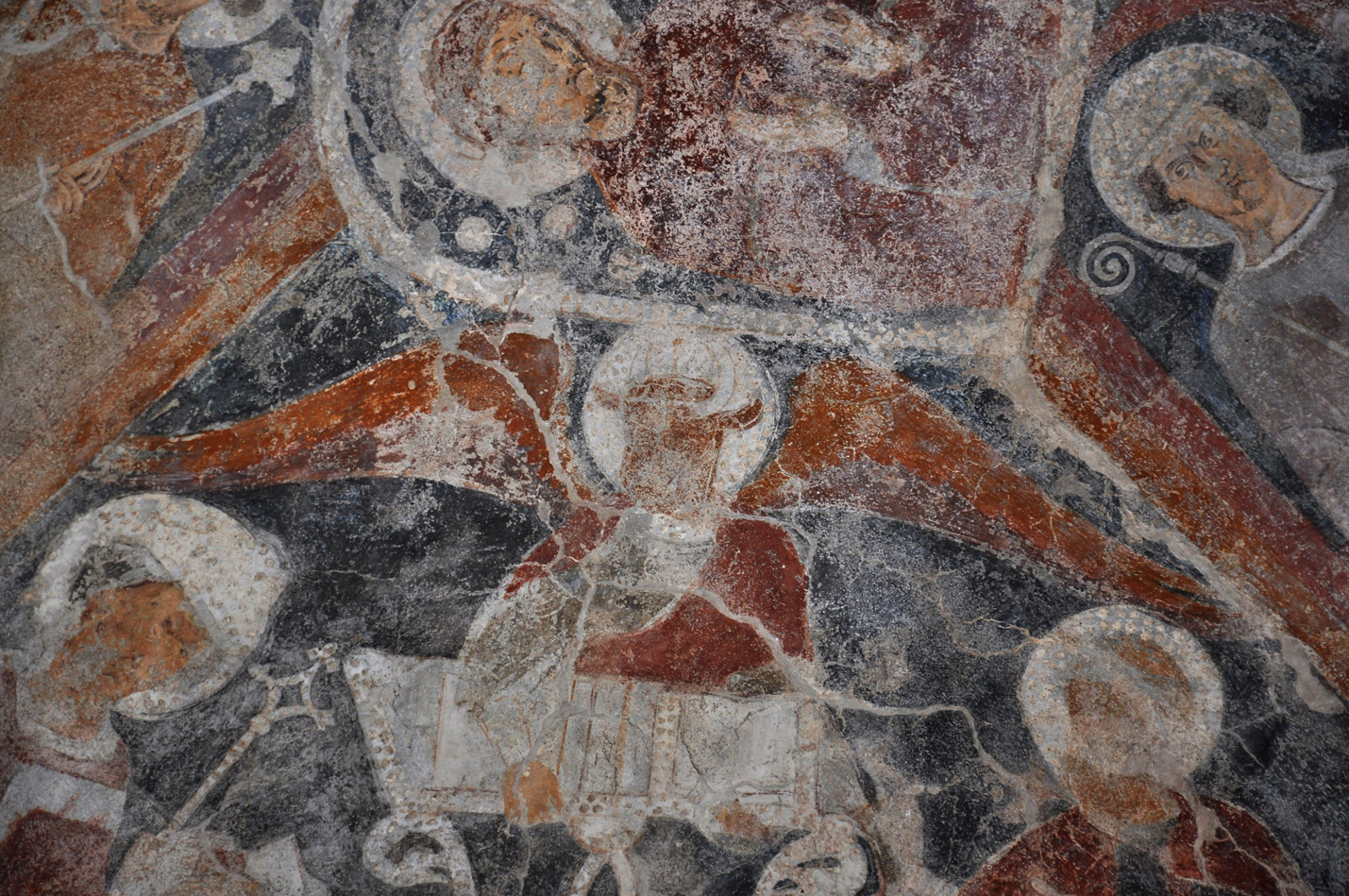In the second millenium we see portraits of Luke simply as a human figure, with the ox often added as an attribute, as in the first image at right.
The books pictured with Luke in the South Tyrol fresco naturally refer to the gospel he wrote. Many other portraits show him either writing in a book or holding a book or scroll (example of scroll), and the mosaic in the second picture at right also gives him a basket of scrolls, an emblem from classical times denoting a philosopher.
A separate tradition holds that Luke made a painting of the Virgin and Child. (The first picture on the right has an angel holding up the completed painting.) Molanus (271) traces this story to Theodorus Lector's 6th-century Historia Ecclesiastica. Theodorus said the painting was sent by the Empress Eudoxia from Jerusalem to her daughter Pulcheria in Constantinople (see col. 166). Many images said to be copies of Luke's painting have been made through the years, as well as many images of Luke at his easel with the Virgin and Child sitting for him as in this fresco by Vasari. This tradition led to the adoption of Luke as patron saint of artists.
In Rome's Santa Maria Maggiore a painting of the Virgin and Child called Salus Populi Romani ("The Health of the Roman People") is claimed to have been made by Luke, and the church even has a painting of Luke making the painting.
St. Luke the Evangelist has been assumed to be "Luke, the most dear physician" of Colossians 4:14. Molanus (ibid.) tells of artists who have placed small vases that he presumes to be for medicaments in pictures of Luke's studio.
Usually St. Luke is shown bearded and with a full head of hair, though exceptions include the first image at right and an odd portrayal with a tonsure in Cefalù Cathedral.
Prepared in 2014 by Richard Stracke, Emeritus Professor of English, Augusta University. Revised 2019-09-23.

Luke with his painting, book, and ox (See description page)

With his book and basket of scrolls (See description page)

The ox represented as writing the Gospel (See description page)
ATTRIBUTES
- Ox
- Scroll with a quotation from his gospel
MORE IMAGES
- Mid-12th century: A mosaic portrait in Sicily emphasizes Luke's reliance on trustworthy eyewitness accounts of "the things that have been accomplished among us."
- 1473-74: Mantegna's San Luca Altarpiece in Padua.
DATES
- Feast day: October 18
BIOGRAPHY
- Golden Legend #156: html or pdf
- Roman Breviary (1632 Latin text), 1065-66
- Acta Sanctorum, October vol. 8, 282-313
- Metaphrastes, Life of St. Luke, Migne PG, CXV, 1129-40.
ALSO SEE